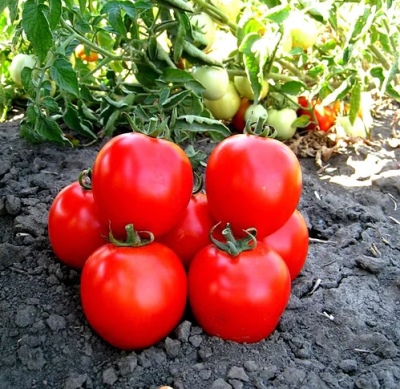
- Authors: Japan
- Category: hybrid
- Growth type: determinant
- Appointment: fresh consumption, for pickling and preserving
- Ripening period: early
- Ripening time, days: 95-100
- Marketability: high
- Transportability: high
- Bush size: tall
- Bush characteristic: compact
Harvesting hybrid tomatoes are in high demand among consumers. However, each such plant must be approached carefully, taking into account all its subtleties. The Aswon variety fully deserves this.
Breeding history
The culture belongs to the varieties of Japanese selection. It was being worked on at Kitano Seeds. Now this company belongs to a Dutch holding. The exact dates of breeding and initial varieties are not characterized in the available sources.
Description of the variety
Aswon is a determinant hybrid. Its main advantages are high productivity and high marketability. The tall bushes of this tomato are compact. They are characterized by a large number of leaves. Cleaning with complex equipment is allowed.
The main qualities of the fruit
Tomatoes are deep red in color. The characteristic green spot is not found in the region of the peduncle. The mass of a single fruit is from 0.07 to 0.09 kg. There are 5-6 rounded-cubic berries per 1 brush. They contain dense, fleshy flesh inside.
Taste characteristics
The variety feels close to an ordinary field tomato. This allows the crop to be used in any culinary area. The color and consistency of the pulp is also not a problem. In general, the culture is worthy. The share of dry matter accounts for 5.4 to 6% of the mass of a tomato.
Ripening and fruiting
Aswon is a typical early variety. Under normal conditions, the crop will ripen in 95 or 100 days. But only, of course, on condition of high-quality agricultural technology and the right choice of place, region. The fruits will appear for a long time.
Yield
The variety belongs to the high-yielding group. With industrial cultivation, up to 100 tons per hectare of plantation can be grown. In an extremely hot season, the harvest is reduced only to 95-97 tons per hectare. In the case of growing in a vegetable garden, the yield can reach 9 kg per square meter.
The timing of planting seedlings and planting in the ground
You need to sow seeds in February. In some cases, you can do this in March. Accordingly, it will be possible to wait for the germination to form in March or April. Readiness for transplanting into closed areas (under a film or in a greenhouse) is achieved in May, under favorable conditions - in the first decade. If it is decided to plant Aswon in an ordinary open garden, then it is necessary to transplant it there only in June.

Growing tomato seedlings is an extremely important process, because it largely depends on whether the gardener will be able to harvest at all. All aspects must be taken into account, from seedbed preparation to planting in the ground.
Landing scheme
It is necessary to adhere to the rule of 400x400 mm. Therefore, there are 4 or 5 bushes per 1 m2. Subject to the basic rules of agriculture, you can expect to receive berries in July. The row spacing should be 0.5 m. There are no more special subtleties here.

Growing and care
A good harvest can be obtained in prepared, slightly acidic soil. Since autumn, the earth is dug up and improved with the addition of mullein. Water the plantings as the soil dries up. Most often, irrigation occurs every 10-14 days. Drip irrigation can be done once a week because it is less powerful.
During the growing season, the water consumption is from 5 to 10 liters per plant. During the active formation of fruits, this indicator increases to 10-20 liters. More precisely, it can be determined only taking into account the state:
- the plants themselves;
- soil;
- precipitation.
As soon as the ground is watered, it should be loosened immediately. Fertilization of the Aswon variety should be done in any case. Fungi, bacterial and viral pathologies for this plant are not particularly scary. Fruit cracking is also almost impossible. The plant is still able to easily tolerate the effects of hot, dry weather.
But Aswon is only tolerant to the top fruit rot. For additional safety net during mass late blight disease, preventive treatment with Bordeaux mixture is carried out. For protection against gray rot, use "Fitosporin-M". The use of special insecticides helps to fight insects that attack the tops.




A plant needs different micronutrients at each stage of growth. All fertilizers can be divided into two groups: mineral and organic. Folk remedies are often used: iodine, yeast, bird droppings, eggshells.
It is important to observe the rate and period of feeding. This also applies to folk remedies and organic fertilizers.



























































































